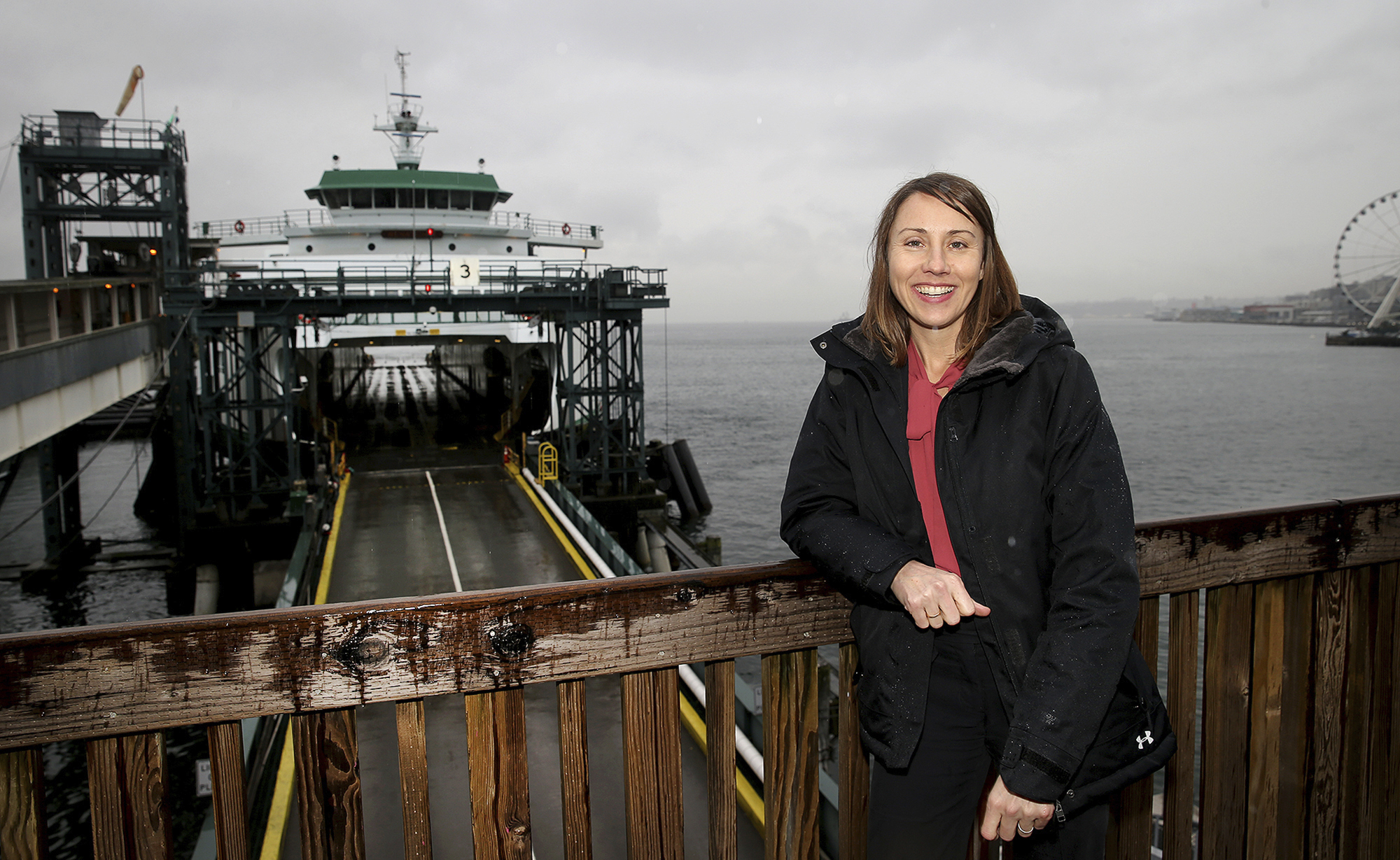SEATTLE — There’s a new generation leading Washington’s ferries.
Forty-year-old Amy Scarton became director Feb. 1, bumping interim boss Elizabeth Kosa back to her No. 2 staff chief position. Kosa, 38, didn’t mind.
“I was extremely excited about Amy,” Kosa said of the replacement for Lynne Griffith, who retired in January at age 67. “She brings new depth and knowledge to the ferry system. She’s multimodal and highly capable with government.”
Griffith, familiar with Scarton’s work atop the Department of Transportation’s Community and Economic Development Office, tabbed her for the post. The selection was supported by Transportation Secretary Roger Millar and Gov. Jay Inslee, reported the Kitsap Sun.
“She was hand-picked,” Kosa said. “We wanted her.”
Scarton was surprised because she had no maritime experience. She had been overseeing the department’s modal divisions.
“Walking, biking, community engagement, working with local governments throughout the state — they said, ‘We want you to bring that to the ferries,’” she said. “What that experience will help me do is see a ferry trip as not just dock-to-dock but door-to-door. We have to work seamlessly with other transportation providers in the region.”
With the boats themselves functioning well, Scarton says her first job is to keep it going.
“Total ridership is up and missed sailings are down,” she said. “Order one is to stay the course, When you look at what you need, it’s not just the terminals and vessels but the people. Roger asked me to bring into the ferries a greater understanding of our WSDOT agency-wide emphasis areas. Those are workforce depth, inclusion and practical solutions.”
Workforce depth is recruiting, training and compensating employees “because it’s really the people that make the system work.” Half of WSF employees are eligible for retirement, she said. Inclusion is recruiting new workers who are representative of ferry communities, including minorities and the disabled. Practical solutions are looking at a broader set of factors, such as door-to-door instead of dock-to-dock, and reaching out to communities and transit operators for input.
Scarton grew up in northern Kentucky, outside of Cincinnati, the daughter of teachers. They instilled the importance of higher education in her and her three siblings. Scarton graduated with bachelor’s and law degrees from Duke University, where she also ran track and played rugby.
At law school, she took an avenue toward public service, and negotiation and mediation.
“Ninety-nine percent of students focused on how to win a battle when they get to court, and I wanted to keep people out of court and focus on mediation techniques,” she said.
While most students stayed in Durham, North Carolina, to study for the bar exam, Scarton moved to Washington, D.C., where she worked for 15 years. From 2011 to 2013, she was deputy assistant secretary for transportation policy at the U.S. Department of Transportation, working for Secretary Ray LaHood. Earlier, she was with the House of Representatives as majority counsel for the Subcommittee on Highways and Transit. She also served as chief of staff at the U.S. Surface Transportation Board and as a policy adviser to U.S. Rep. Earl Blumenauer, D-Ore.
LaHood, she said, taught her the importance of bipartisanship, working with everybody with a stake in an issue, and going directly to locals to hear what they think will work.
Though Scarton has achieved much in her young life, she doesn’t believe she’s an overachiever.
“I would say I’m energetic,” she said. “I bring a lot of passion to my work, but I also bring a lot of passion to living every day. I’m a mother of two young kids. We’re an active family. We do a lot of hiking and biking and camping.”
She, her husband and daughters, 4 and 1 1/2 years old, live in Seattle.
“I’m energetic and passionate but also relaxed, not hierarchal,” she said. “My management style is to listen first. I want to know what are the top priorities of our staff, our customers, our elected officials because they know the ferry system. I need to find a way to take those viewpoints into account and put them into action.”

